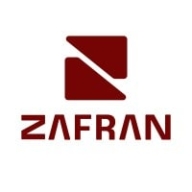


FortiCNAPP and Automox compete in the cybersecurity and systems management space. Automox appears to have an advantage due to its comprehensive feature set that justifies its pricing, despite FortiCNAPP being praised for its affordability and customer service.
Features: FortiCNAPP provides network security with features like advanced threat protection, real-time monitoring, and vulnerability management, making it suitable for organizations with stringent security needs. Automox offers robust endpoint management with automated patching, policy management, and cross-platform support, which allows for scalability and ease of use across diverse IT environments.
Room for Improvement: FortiCNAPP could enhance integration capabilities, expand its feature set to better compete with broader systems management platforms, and improve scalability options for larger enterprises. Automox may benefit from optimizing its pricing structure, offering deeper customization for specific use cases, and enhancing its user interface to increase intuitiveness.
Ease of Deployment and Customer Service: FortiCNAPP is noted for its straightforward deployment process and responsive customer support, which aids IT teams with limited resources. Automox's cloud-based deployment simplifies setup and offers flexibility for adapting to dynamic infrastructure changes, supporting modern IT operations with agility.
Pricing and ROI: FortiCNAPP is competitively priced, offering substantial ROI for businesses focusing on dedicated security. Automox requires a higher initial investment but is seen as providing greater ROI through its extensive management features, reducing long-term costs through efficiency.
| Product | Market Share (%) |
|---|---|
| Zafran Security | 1.1% |
| Automox | 0.5% |
| FortiCNAPP | 1.5% |
| Other | 96.9% |
| Company Size | Count |
|---|---|
| Small Business | 7 |
| Midsize Enterprise | 3 |
| Large Enterprise | 1 |
| Company Size | Count |
|---|---|
| Small Business | 4 |
| Midsize Enterprise | 4 |
| Large Enterprise | 4 |
Zafran Security integrates with existing security tools to identify and mitigate vulnerabilities effectively, proving that most critical vulnerabilities are not exploitable, optimizing threat management.
Zafran Security introduces an innovative operating model for managing security threats and vulnerabilities. By leveraging the threat exposure management platform, it pinpoints and prioritizes exploitable vulnerabilities, reducing risk through immediate remediation. This platform enhances your hybrid cloud security by normalizing vulnerability signals and integrating specific IT context data, such as CVE runtime presence and internet asset reachability, into its analysis. No longer reliant on patch windows, Zafran Security allows you to manage risks actively.
What are the key features of Zafran Security?
What benefits can users expect from Zafran Security?
In industries where security is paramount, such as finance and healthcare, Zafran Security provides invaluable protection by ensuring that only exploitable vulnerabilities are addressed. It allows entities to maintain robust security measures while allocating resources efficiently, fitting seamlessly into existing security strategies.
Facing growing threats and a rapidly expanding attack surface, understaffed and alert-fatigued organizations need more efficient ways to eliminate their exposure to vulnerabilities. Automox is a modern cyber hygiene platform that closes the aperture of attack by more than 80% with just half the effort of traditional solutions.
Cloud-based and globally available, Automox enforces OS & third-party patch management, security configurations, and custom scripting across Windows, Mac, and Linux from a single intuitive console. IT and SecOps can quickly gain control and share visibility of on-prem, remote and virtual endpoints without the need to deploy costly infrastructure.
Automox dramatically reduces corporate risk while raising operational efficiency to deliver best-in-class security outcomes, faster and with fewer resources.
FortiCNAPP is a comprehensive cloud security platform focusing on ease of use and machine learning-driven anomaly detection. It offers robust compliance reporting, seamless integration, and continuous monitoring, making it an essential tool for organizations managing multi-cloud environments and security configurations.
FortiCNAPP provides significant capabilities in cloud security, compliance, and vulnerability management. Designed for organizations needing efficient monitoring, it enables detection of anomalies across cloud infrastructures while optimizing security posture and ensuring compliance with environments like AWS and GCP. The platform offers in-depth insights through scanning of IAC scripts, host systems, and cloud configurations. Recognized for effectively managing security posture, it safeguards Kubernetes and container environments, providing comprehensive threat detection and response. However, some areas like visibility, IAM security controls, and compliance metrics need improvement. Users face challenges with alert setup and lack intuitive design, alongside issues like FedRAMP authorization absence and complexity in the data model.
What are the key features of FortiCNAPP?FortiCNAPP is implemented extensively by industries needing reliable cloud security, such as finance, healthcare, and technology sectors. It supports organizations in enhancing cloud infrastructure protection, ensuring compliance, and strengthening vulnerability management. By integrating with platforms like AWS and GCP, businesses can optimize security posture in their cloud deployments.
We monitor all Vulnerability Management reviews to prevent fraudulent reviews and keep review quality high. We do not post reviews by company employees or direct competitors. We validate each review for authenticity via cross-reference with LinkedIn, and personal follow-up with the reviewer when necessary.